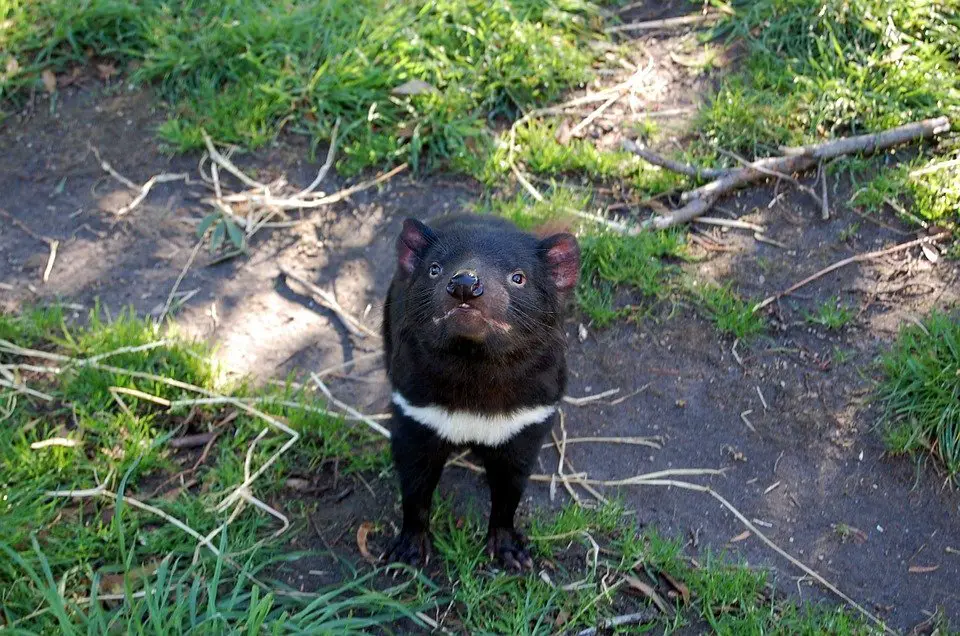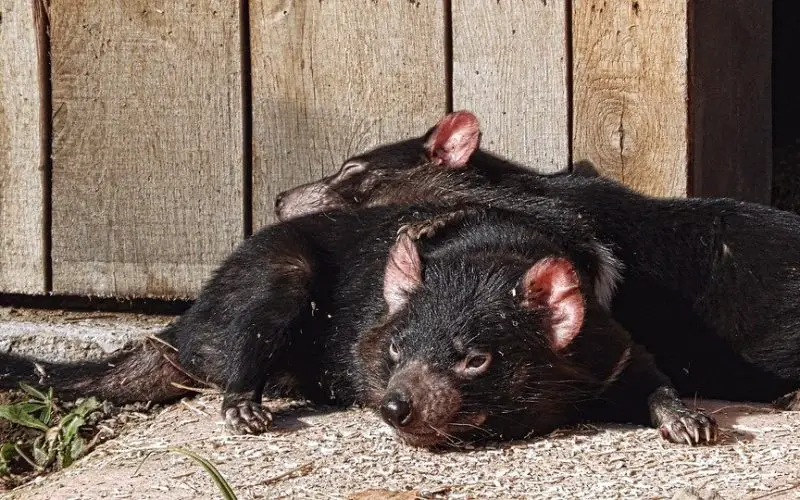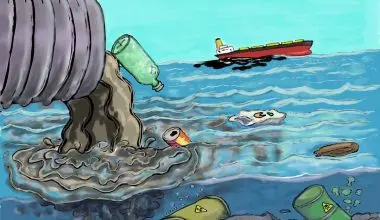Table of Contents Show
The Tasmanian devil (Sarcophilus harrisii) belongs to the family of Dasyuridae. It is the largest carnivorous marsupial in the world. It took this tag from the Thylacine which became extinct in 1936. Due to its massive head and neck size, it has the ability to generate the most devastating bite of any land mammal. It is black in color, characterized by a strong build, pungent odor and an extremely loud and disturbing screech. They were once abundant throughout the country of Australia, however they are now found on the island of Tasmania and along the Maria Island.
In 2008 it was listed as an endangered species by the IUCN Red List. There are multiple reasons why this species is becoming endangered and these will be discussed soon but the most critical reason why Tasmanian devils are facing the prospect of becoming extinct is because of the deadly Devil Facial Tumor Disease (DFTD).
How did the Tasmanian devil become endangered?
1. Devil Facial Tumor Disease (DFTD)
This opportunistic cancer was discovered in the late 1990s. The cancer causes the development of large lumps on the face especially around the mouth region of the species. The development of this tumor along the mouth region deprives the ability of the Tasmanian Devil to eat causing it to die of starvation. This form of cancer has killed thousands of Tasmanian devils. To make matters worse, this is a contagious condition which means it will not be isolated in one Tasmanian devil and can potentially spread to multiple Tasmanian devils making them susceptible to this condition.
The transmission of this disease occurs during combat when one Tasmanian devil bites another. When the bite occurs, the rapidly growing tumor on the head and neck region kills the animal in a period of 6 months to 24 months.
2. Road kill
Apart from the gruesome Devil Facial Tumor Disease, Road kill is the second most important reason why the Tasmanian devil is endangered. This is probably due to the fact that there are a huge number of cars in Tasmania. Although this shouldn’t be an issue as all the animals are susceptible to road kill, the fact that the DFTD has significantly hampered the population of the devil already, this might further be exacerbating the number of deaths.
3. Loss of Habitat:
As the size of area they have to live in reduces, their population reduces proportionally. Habitat loss prevents the species to breed effectively, thereby reducing the chances of them to produce new offspring and consequently reducing the population. Habitat loss can occur due to a wide array of reasons such as urbanization, agriculture, pollution, deforestation, fires and climate change.
4. Predators:
The Tasmanian devil, like all species is a prey for a potential predator. Most commonly Foxes are the predators of the Tasmanian devil and this along with the DFTD decreased their number. Coupled with the fact that the tumor already limits the ability of the Tasmanian devil to eat adequately and many other animals in the habitat compete with the Tasmanian devil for food reduces its chances of getting sufficient diet to be able to survive and therefore drawing Tasmanian devils towards death by starvation.
If things carry on this way as they are going so far, it is predicted that the Tasmanian devil may become extinct by the year 2035.

Can the Tasmanian Devil be saved?
Hope is not lost. However, the Tasmanian devil has starting to develop some resistance to the tumor. This is good news as this is reducing the related death count due to DFTD without any human intervention and if experts do figure out how to reverse the tumor we may well see a significant decline in the tumor-related death count, potentially saving the species from extinction.
The phenomena of Natural Selection are also helping the Tasmanian devil in surviving. There have been genotypic alterations in the genome of the Tasmanian devil proving that the DNA of the devil is trying to fight of the devastating tumor. This alternation in the genome of the Tasmanian devil has allowed future offspring to become more immunologically resistant to the tumor, trying to fight off its progression in the Tasmanian devil. The most surprising thing is how quickly this change has occurred, as the animal is evolving to fight of the threats to its potential extinction.
The Australian and Tasmanian government has also launched a combined initiative known as “Save the Tasmanian Devil Program “in 2003 following the significant decline in the population of the animal. The mission of the program is to investigate and monitor the population and morbidity of the Tasmanian devil and find preventive methods which can reduce the death of the animal.
Captive breeding programs and habitat fragmentation are being carried out in order to breed the Tasmanian devil free of any disease and also prevent the spread of tumor by not allowing it to be exposed to other Tasmanian devils which may potentially have the tumor. Captive breeding however is sometimes very difficult and unfair but is important to protect the Tasmanian devil from DFTD.
Donations can be made to STDP by giving monetary donations to The University of Tasmania through their official fundraising arm called “Save the Tasmanian Devil Appeal” or direct donations can be made to the STDP for their ongoing conservation and protection programs.






